Himalayan Guinea Pig: History, Diet & Facts | RodentsFact
Guinea pigs are a popular choice for pet owners. They are excellent for families since they are small enough for kids, but they also come in a wide range of attractive fur designs, making them appealing to people of all ages. The Himalayan pattern is one such fur pattern that defines a guinea pig with distinctive coloration.
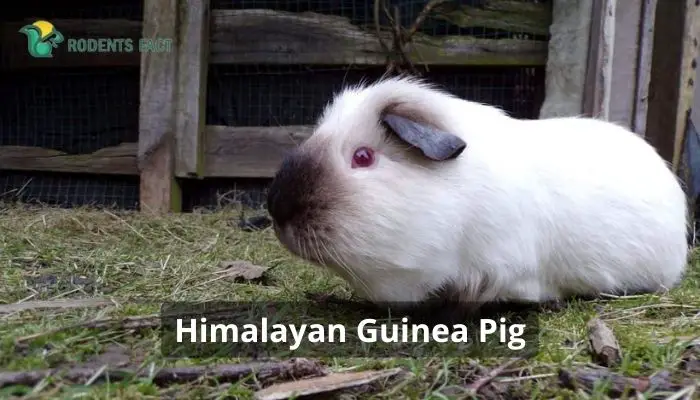
Albino cavies, known as Himalayan guinea pigs, have white coats and bright red eyes. While they are not an entirely distinct species, they are a different breed. The black or brown hair on the Himalayan Guinea Pig’s face, ears, and paws set it apart from other guinea pigs.
There is a common misconception that Himalayan guinea pigs are comparable to Siamese cats because they have distinctive markings called “points.”
Facts About Himalayan Guinea Pig
There are some unique facts regarding guinea pigs that you need to be aware of. The following is some information on Himalayan Guinea Pigs:
| Length | About 8-10 inches |
| Family | Cavies |
| Weight | About 1.5 to 2.5 lbs |
| Care Level | Intermediate |
| Lifespan | Upto seven years |
| Colors | Completely white, red-tinted eyes |
| Temperament | Petting, talking, and eating snacks make them happy |
Himalayan Guinea Pig can survive any temperature unless you live in a particularly hot or cold region. Unlike other breeds, this one has a hard time with sudden fluctuations in temperature.
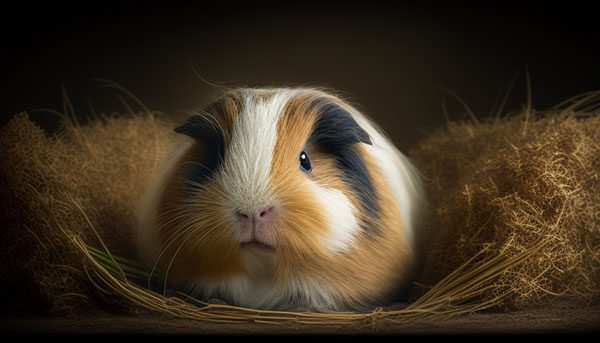
Also, the Himalayans thrive in confined spaces. The Himalayan breed should be avoided if you want to keep your dogs outdoors.
History of Himalayan Guinea Pig
Not even the Himalayan area of Asia can claim the Himalayan guinea pig as their own. The Himalayan guinea pig is South American in origin. Animals like this Guinea Pig are sought after as pets and for exhibition.

Over a thousand years ago, indigenous peoples in southern South America brought the guinea pig into domestication. Sacred to the Andes, the llama plays a vital role in food, religious rituals, and traditional medicine.
The Himalayan guinea pig, like other guinea pig breeds, was transported to Europe centuries ago. To get to North America, the guinea pigs had to go via Europe, where they became popular pets.
Albinism is a genetic condition that causes someone to lack color. Europeans started breeding them for their unusual appearance, which was popular.
Himalayan Guinea Pig Life Span
When adequately cared for, Himalayan Guinea Pigs may live for 5 to 7 years on average.
Generally speaking, guinea pigs are healthy animals, although they are subject to the health issues that plague most guinea pig breeds.
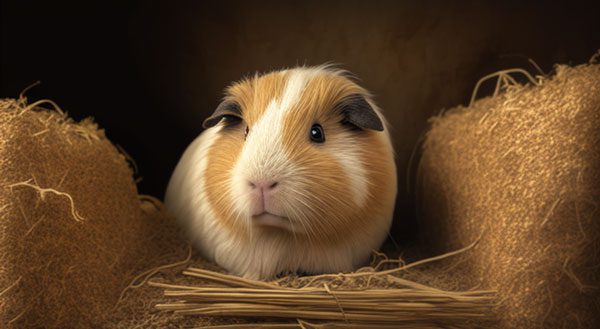
Himalayan Guinea Pig Appearance
The hair of Himalayan guinea pigs ranges in length from short to medium. Compared to other long-haired guinea pigs, such as the Peruvian, they are much easier to maintain.
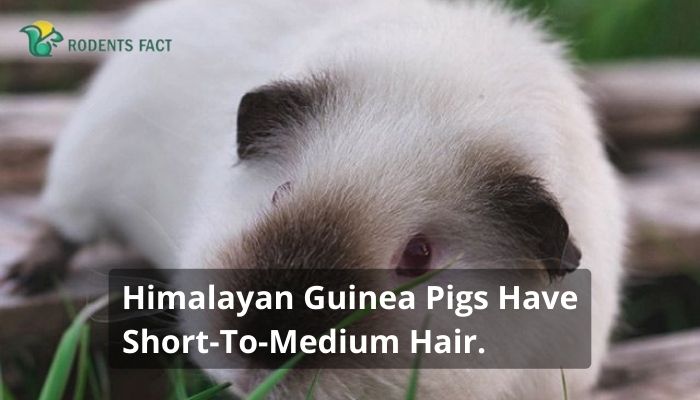
The environment in which a Himalayan is found affects the color of its coat. Their patches will expand and darken in colder weather, but they will go away completely in warmer weather
Part of the Himalayan’s natural process. But you should still ensure that your pet’s room is kept at a consistent temperature.
Himalayan Guinea Pig Size
When fully grown, Himalayan guinea pigs measure anywhere from 8 to 12 inches long.
Their bodies are short and stocky, with broad shoulders to show for it.
Himalayan Guinea Pig Colors
This is an albino breed; however, they develop some color pigments in certain areas.
Himalayans are born entirely white, with characteristic red-tinted eyes. As they grow, they will develop colored spots called “points.”
These points typically appear on the ears, nose, and feet. It may be several weeks to several months before points begin to develop.
The “points” are typically black, although brown/chocolate tones are also possible.
Himalayan Guinea Pig Characteristics
This breed has average-sized animals, with adults measuring between 8 and 12 inches in length. Himalayans, however, are of stockier species, with broad shoulders and thick bodies.
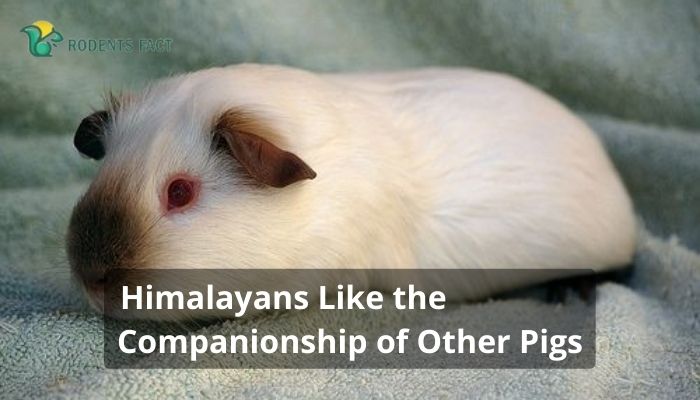
Regarding personality and temperament, Himalayans are your typical guinea pig consuming good vitamin C to send back love if treated right.
However, they can also be easily skittish and scared, especially in new environments. To make them comfortable, they must be provided with hideouts in their cages.
Additionally, since they are herd animals, Himalayans are most comfortable when they have the company of a fellow piggy. As such, if you are thinking about adopting a Himalayan guinea pig, consider adopting a pair.
Remember, however, that getting different sexes will result in many tiny ones. Therefore, consider getting a same-sex pair if that is not your wish.
Himalayan guinea pigs can live for up to seven years when provided with proper care.
Himalayan Guinea Pig Behavior and Temperament
Like other guinea pigs, Himalayans are very social pets. They thrive when they live with other guinea pigs and love interaction with their owners, too.
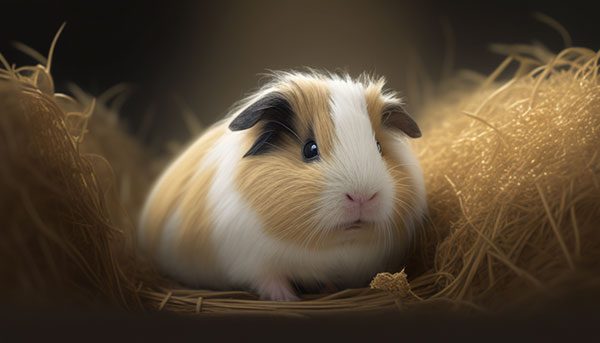
When they are used to being handled, they enjoy being pet, talked to, and snacking on their favorite treats. Guinea pigs are not aggressive animals, but as with any pet, they are frightened, hurt, or startled if they can nip.
Diet of Himalayan Guinea Pig
Himalayan Guinea pigs exclusively consume plants; they are herbivores.

A mature Himalayan guinea pig’s diet should be predominantly Timothy or Orchard grass hay, guinea pig pellets, fresh veggies, and fresh fruits.
Your guinea pig needs vitamin C. Pay attention to the expiry date on your guinea pig’s pellets so it can get the vitamin.
Bell peppers are high in vitamin C. Always supply clean drinking water. Your pig will get some water from fruits and vegetables, but a bottle of water and a bowl must be provided.
Himalayan Guinea Pig Health Issues
If cared for appropriately, Himalayan Guinea Pigs are typically healthy.

We urge that you check on your guinea pig daily for signs of illness. Without treatment, stress-related health issues may quickly worsen in Guinea pigs.
Make sure you choose a veterinary clinic that has experience treating guinea pigs in your region. Begin building a relationship with them as soon as possible.
It is not uncommon for them to suffer from the same health issues as all other types of guinea pigs.
Respiratory Infections
As the most prevalent guinea pig health issue, pneumonia, and other respiratory illnesses are widespread in most breeds.
An increase in infection risk might result from environmental stress, which is why it is so important to provide correct care.
Diarrhea
It is common for guinea pigs to suffer from diarrhea and other gastrointestinal problems because of their delicate digestive systems.
Ensure your guinea pig is getting a balanced, healthful food suited for the species.
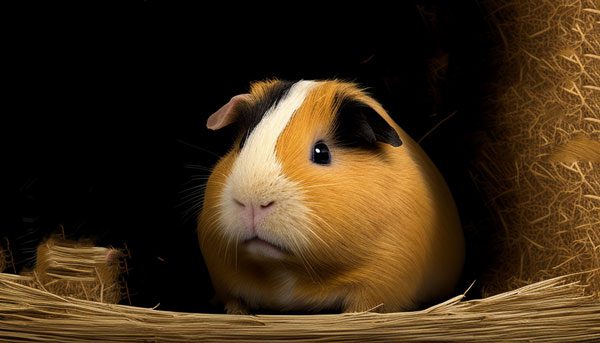
Vitamin C Deficiency
Guinea pigs’ meals must be rich in vitamin C. (between 10 and 50 mg per day).
Fresh fruits and vegetables, as well as vitamin C-fortified pellets or feed, should be fed to your guinea regularly.
Symptoms of vitamin C insufficiency include a poor appetite, swollen legs or joints, and diarrhea.
Urinary Problems
Guinea pigs are prone to bladder infections and urinary calculi (stones).
While both sexes are at risk for sickness, females are more susceptible. Anorexia, trouble peeing, blood in the urine, and a stooped posture are all signs that a guinea pig may have urinary issues.
Can you tell if a squirrel is male or female? Know the difference.
Skin Problems
Guinea pigs, especially young ones, are prone to fungal skin illnesses like ringworm.
Swelling and redness are two of the most common symptoms of eczema.
Other Issues
Other diseases that may affect guinea pigs include cancer and parasite infestations, as well as abscesses and barbering (when the guinea chews its hair).
Himalayan guinea pigs, unlike other guinea pig species, are particularly vulnerable to the effects of climate change. They thrive at temperatures between 60 and 80 degrees Fahrenheit and should not be left out in the sun or an environment with high humidity.
You should take her guinea to a vet at least once a year for a checkup. Call your veterinarian immediately if you observe any abnormalities in your pet’s health between visits.
Caring For A Baby Himalayan Guinea Pig
Average height at birth is between 3 and 5 inches for Himalayan Guinea Pigs. You may begin feeding your baby solids within the first 24 hours of life if you want.
You should keep them with their mother if they are under three weeks old. After then, it is time to divide the sexes to avoid having even more kids immediately!
Do your homework before buying a Himalayan piglet from an unknown breeder in your neighborhood. Inquire about the breeder’s history with breeding and whether or not they have done health checks on the pigs or their parents.
Diseases in Guinea pigs are unpredictable and hard to anticipate. Finding a trustworthy breeder is key to the health of the animal. Thus adequate care throughout trade is critical.
Frequently Asked Questions
1. Do Himalayan Guinea Pigs Make Good Pets for Kids?
Yes! The Himalayan guinea pig is an excellent companion for children. They are not prone to bite, unlike some other little pets, and they are not as delicate as some other animals.
2. How Much Does It Cost to Buy a Himalayan Guinea Pig?
Himalayan guinea pigs may cost a little bit more than different kinds of cavies because they are not as widespread as the different breeds of cavies; nonetheless, you can still anticipate spending between $50 and $100 for one.
3. Are Himalayan Guinea Pigs Hard to Take Care Of?
No, Himalayan guinea pigs require attention and fresh food; otherwise, keeping them clean and safe is all needed. The bedding should be spot-cleaned daily with complete changes weekly, and ample hay, fresh water, and some leafy, green veggies will need to be provided daily. If you can handle that, they are not difficult to care for.
Final Words
A himalayan guinea pig is a beautiful addition to any home. Because of their short hair, they are amicable and straightforward to take care of.
If you are searching for a little pet, consider the quiet yet affectionate Himalayan Guinea Pig. It does not need a lot of upkeep and might be a terrific business partner. However, ensure that its requirements are satisfied and that you supply it with mental and physical stimulation and a mate.
If you take excellent care of it, you may keep this pig at your side for up to ten years.





